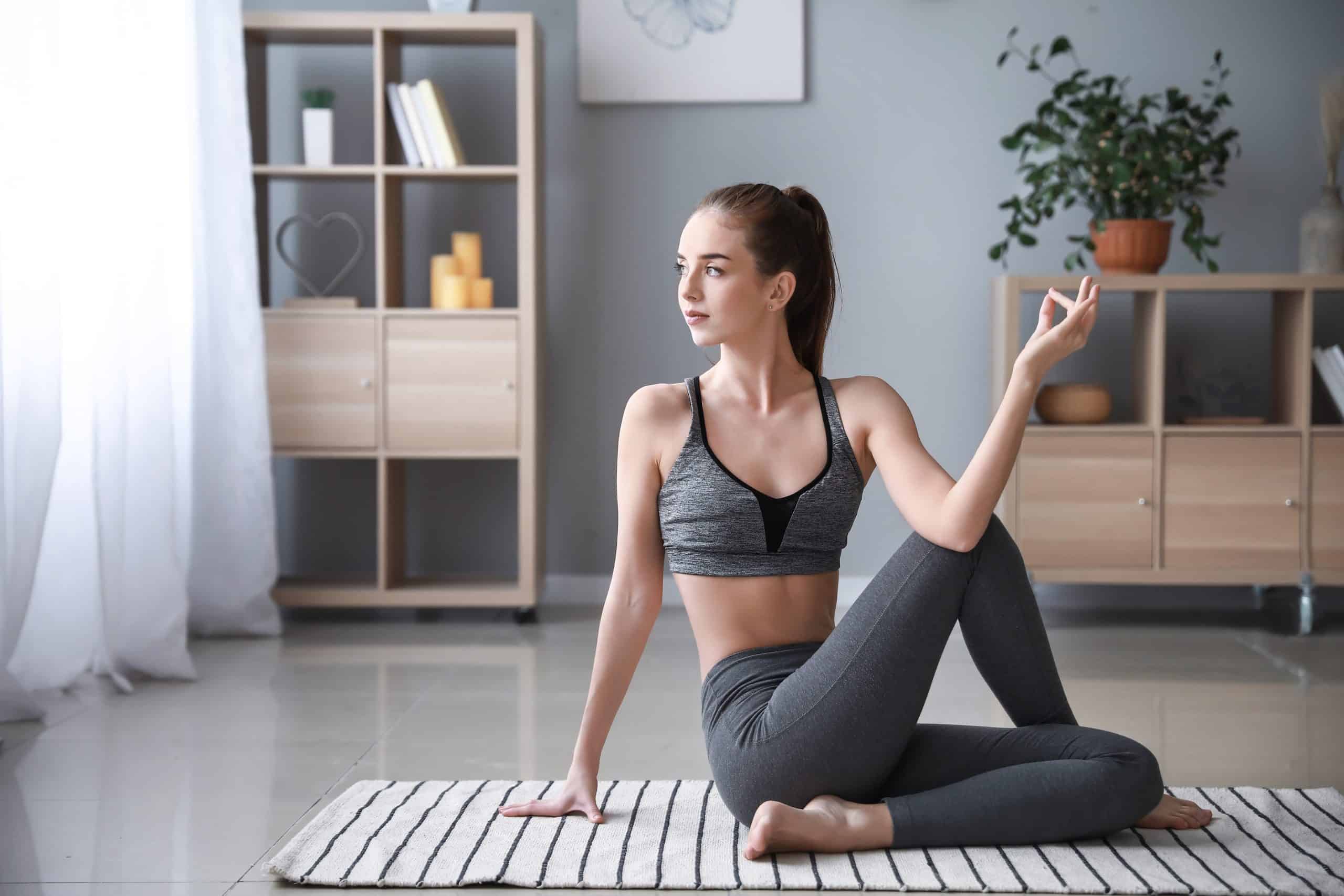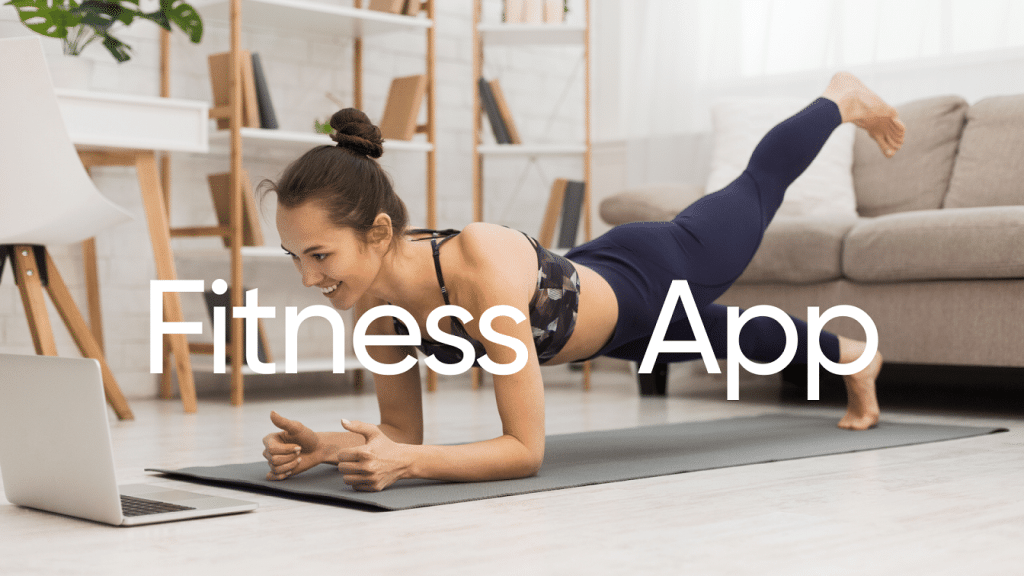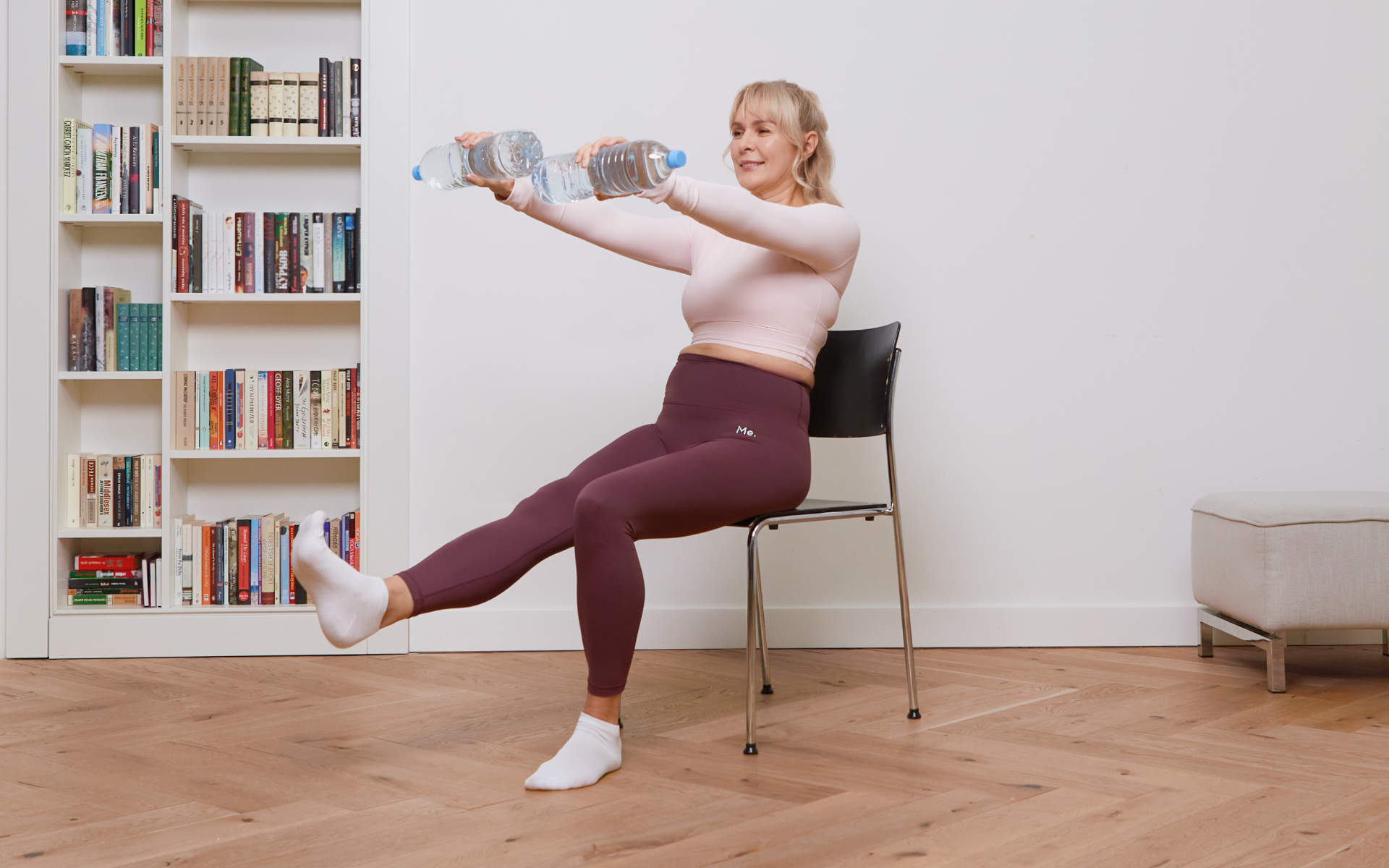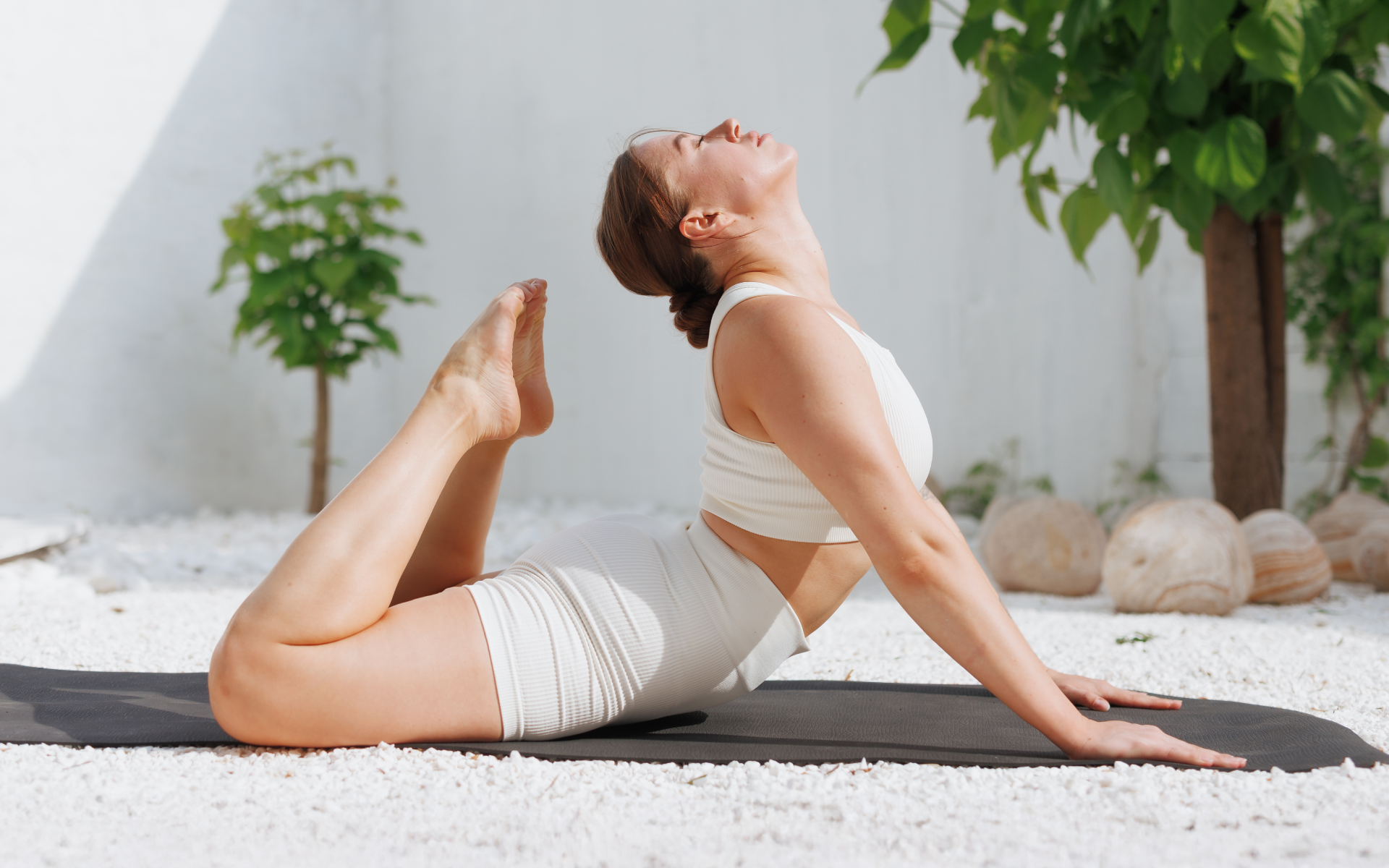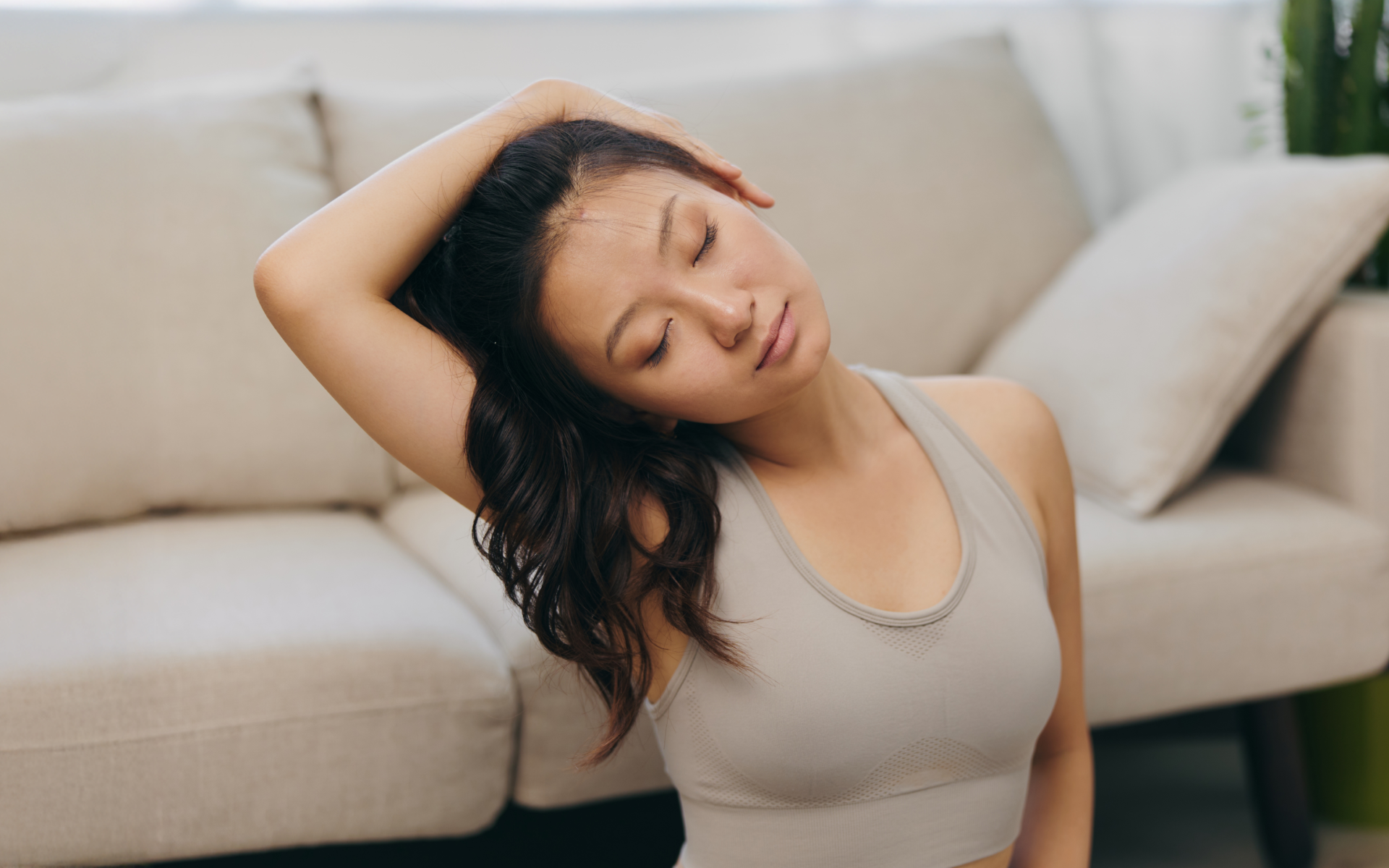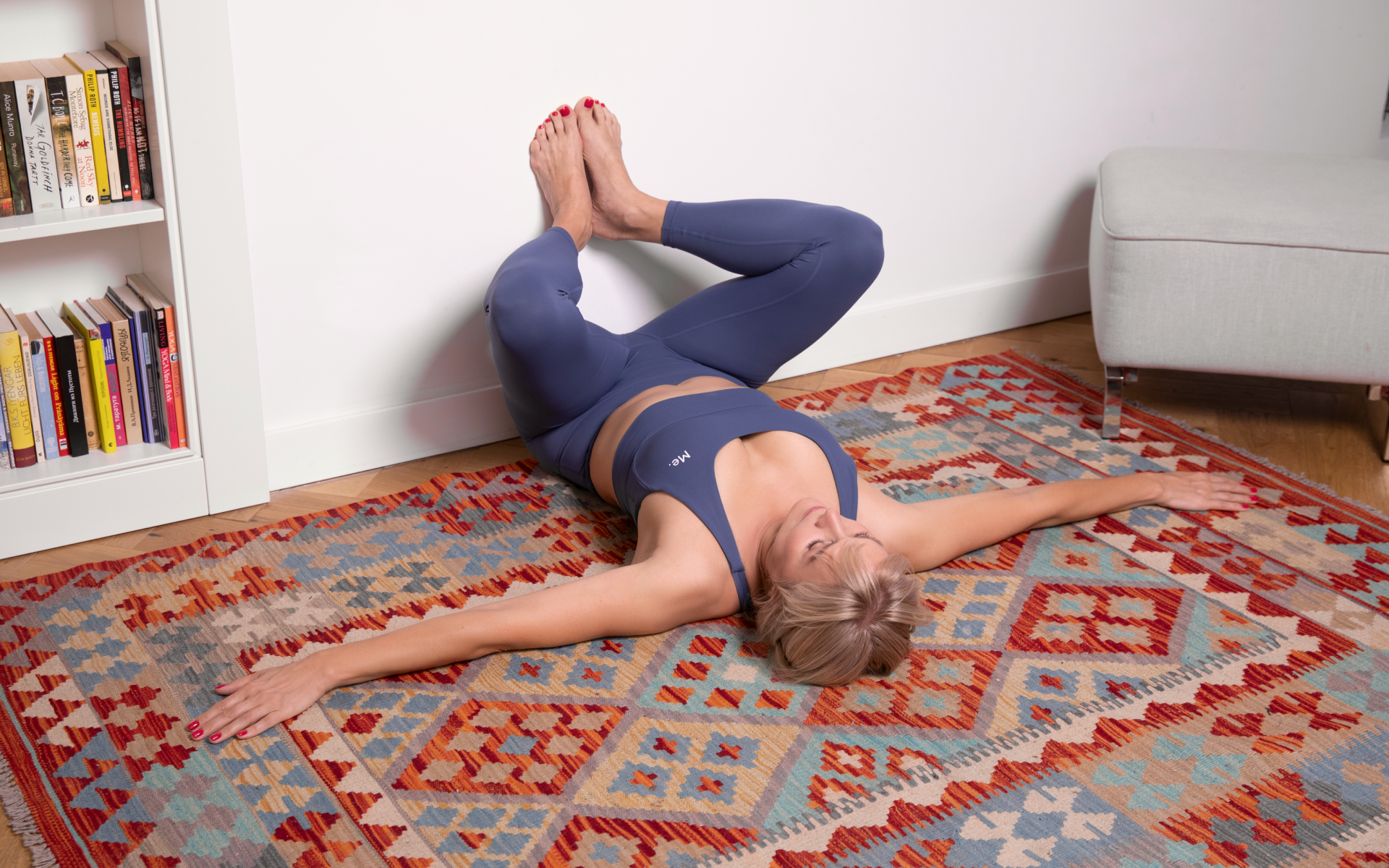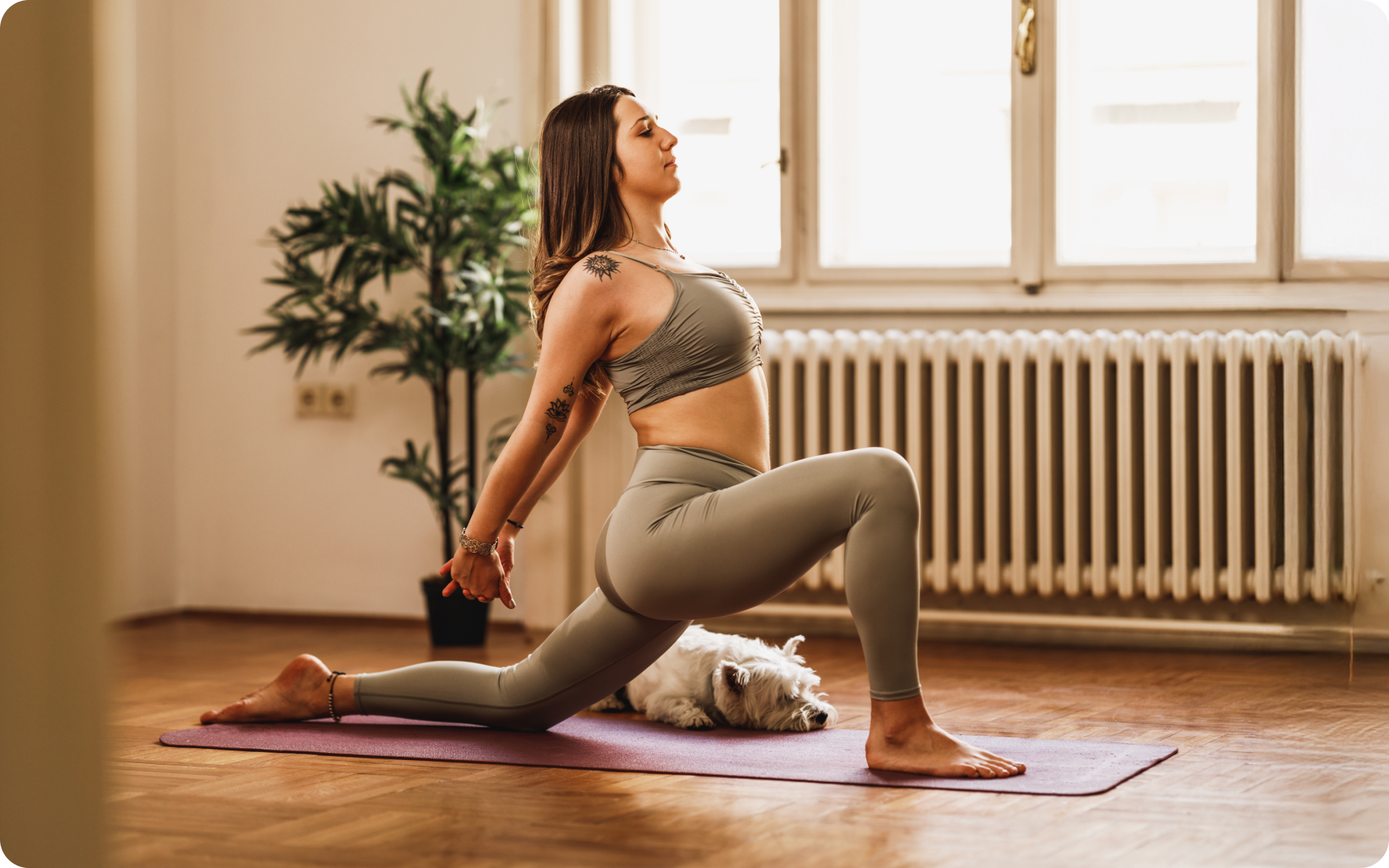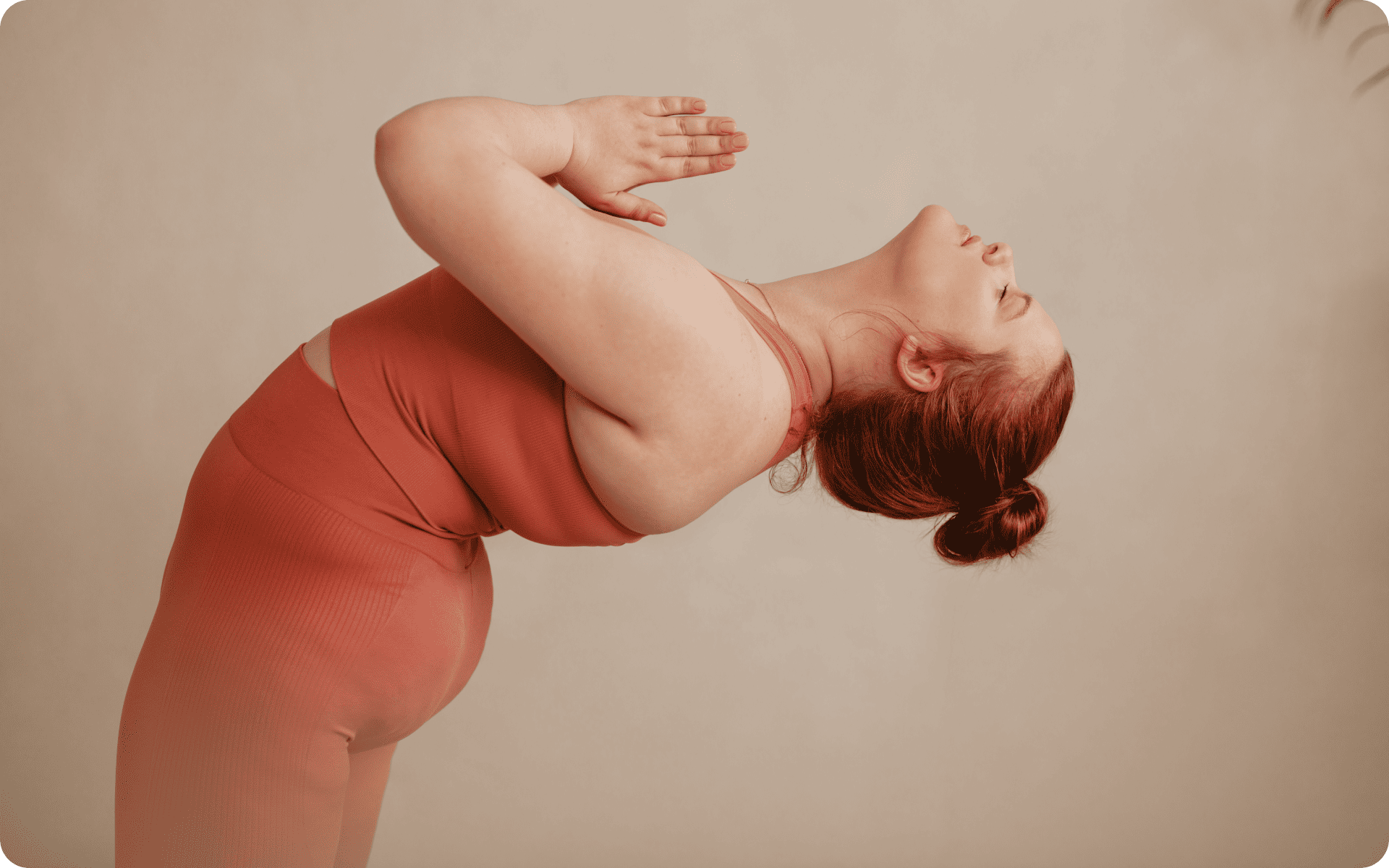If you’re like most people, you may think yoga is all about flexibility and calmness. However, there are many different types of yoga, and some styles can actually help you build strength. Building strength requires more than just lifting weights at the gym. You also need to engage your core muscles, which are the muscles around your trunk that stabilize your spine and help you maintain good posture. Many yoga poses can help you do just that. Let’s learn the 10 yoga poses that can help you build strength, including detailed instructions on how to perform them.
Get your personalized
meal plan!
1. Plank Pose
The plank pose targets your core muscles, including the transverse abdominis, rectus abdominis, and obliques. These are the muscles that help you maintain good posture and stabilize your spine.
When done correctly, the plank pose can help you build core strength and improve your posture.
To do the plank pose:
- Start in a push-up position with your hands under your shoulders and your feet hip-width apart.
- Engage your core muscles and raise your hips so that your body forms a straight line from your head to your heels.
- Hold this position for 30 seconds to 1 minute.
- To release, lower your hips back to the starting position.
If you’re new to the plank pose, start by holding it for 30 seconds. As you get stronger, increase the time to 1 minute. You can also make the pose more challenging by elevating your feet on a stability ball or yoga block.
2. Boat Pose (Navasana)
The boat pose, or Navasana, is a seated position that targets your core muscles, including the rectus abdominis and obliques. This pose can help you build strength in your core and improve your balance. It can also help relieve lower back pain.
Introducing dynamic movement to your boat pose practice can make it even more challenging and help you build even more strength.
To do the boat pose:
- Sit on the ground with your knees bent and your feet flat on the ground. Rest your hands lightly on either side of your body.
- Engage your core muscles and lift your feet off the ground, so that your legs are parallel to the ground. Your torso and thighs should also form a V shape.
- Raise your arms parallel to the ground and hold this position for 5 to 10 breaths.
- To introduce dynamic movement, try lowering your body as if you were going to lie down on the floor while keeping your heels elevated. Then, bring your body back to the starting position and repeat 5 to 10 times.
Read More: Yoga Inversions: Benefits, Definition, Recommendations…All There Is To Know
3. Warrior III Pose (Virabhadrasana III)
The Warrior III pose, or Virabhadrasana III, is a standing balance pose that targets your core muscles, including the rectus abdominis and obliques. It also strengthens your legs, shoulders, and back.
This pose can help improve your balance and coordination.
To do the Warrior III pose:
- Start in a standing position with your feet hip-width apart. Engage your core muscles and shift your weight onto your left leg.
- Bend your right knee and raise your right leg behind you so that your thigh is parallel to the ground. Reach your arms out in front of you, so that they’re parallel to the ground.
- Keeping your core engaged, slowly lower your body until your left leg is parallel to the ground and your right leg is perpendicular to the ground. Your arms should still be out in front of you.
- Hold this position for 5 to 10 breaths. Then, slowly raise your body back to the starting position and repeat on the other side.
4. Chair Pose (Utkatasana)
The chair pose, or Utkatasana, is a standing position that targets your lower body, including your quadriceps, hamstrings, and glutes. It also engages your core muscles, including the rectus abdominis and obliques.
This pose can help improve your balance and coordination.
To do the chair pose:
- Start in a standing position with your feet hip-width apart. Engage your core muscles and bend your knees, lowering your hips as if you were going to sit in a chair.
- Keep your back straight and your knees over your ankles. Raise your arms overhead, so that they’re parallel to the ground.
- Hold this position for 5 to 10 breaths. Then, slowly raise your body back to the starting position.
5. Downward-Facing Dog Pose (Adho Mukha Svanasana)
The downward-facing dog pose, or Adho Mukha Svanasana, is an inverted position that targets your upper body, including your shoulders, chest, and triceps. It also strengthens your legs, including your quadriceps, hamstrings, and calves.
This pose can help improve your flexibility and range of motion.
To do the downward-facing dog pose:
- Start on your hands and knees with your hands shoulder-width apart and your knees hip-width apart (tabletop position).
- Spread your fingers wide and press down into your palms. Tuck your toes under and lift your hips up and back, so that your body forms an inverted V shape.
- Keep your legs straight and your heels lifted off the ground. Let your head hang freely between your arms.
- Hold this position for 5 to 10 breaths. Then, slowly lower your body back to the starting position.
Lean and toned up body isn’t just a far-fetched fantasy. Check out the BetterMe app and watch it propel your weight loss journey into high gear!
6. Camel Pose (Ustrasana)
The camel pose, or Ustrasana, is a backbend that targets your chest, shoulders, and upper back. It also stretches your abdominal muscles and improves your posture.
This pose can help improve your flexibility and range of motion.
To do the camel pose:
- Start on your hands and knees with your hands shoulder-width apart and your knees hip-width apart (tabletop position).
- Place your hands on your lower back, fingers pointing down. Press into your hands as you lift your chest and chin up to the sky.
- As you continue to press into your hands, arch your back and reach your right hand behind you to grab your right ankle.
- Hold this position for 5 to 10 breaths. Then, release your ankle and slowly lower your body back to the starting position. Repeat on the other side.
7. Cobra Pose (Bhujangasana)
The cobra pose, or Bhujangasana, is a backbend that targets your chest, shoulders, and upper back. It also stretches your abdominal muscles and improves your posture. The key is to move slowly and with control to avoid injury. Engaging your back muscles, not just the arms, will help support and protect the spine.
To do the cobra pose:
- Lie on your stomach with your feet hip-width apart and your palms flat on the ground beside your chest.
- Slowly press your palms into the ground and lift your chest off the ground. Keep your lower body and legs on the ground.
- Hold this position for 5 to 10 breaths. Then, slowly lower your body back to the starting position.
8. Dolphin Pose (Makarasana)
The dolphin pose, or Makarasana, is an inverted position that targets your shoulders, chest, and triceps. It also strengthens your legs, including your quadriceps, hamstrings, and calves. Consistently practicing dolphin poses can also help improve your posture.
To do the dolphin pose:
- Start on your hands and knees with your hands shoulder-width apart and your knees hip-width apart (tabletop position).
- Place your forearms on the ground, shoulder-width apart, and interlace your fingers.
- Tuck your toes under and lift your hips up and back, so that your body forms an inverted V shape.
- Keep your legs straight and your heels planted firmly on the ground. Let your head hang freely between your arms.
- Hold this position for 5 to 10 breaths. Then, slowly lower your body back to the starting position.
9. Full Handstand (Adho Mukha Vrksasana)
The full handstand, or Adho Mukha Vrksasana, is an advanced pose that requires strength and coordination. It targets your shoulders, chest, and triceps. Mastering this pose can also help improve your balance.
If you’re a beginner, practice against a wall to get a feel for the position and build up your strength. Once you’ve mastered the wall handstand, you can try the free-standing version.
To do the full handstand:
- Start in a downward dog position with your feet hip-width apart and your hands shoulder-width apart (downward dog is an inverted V shape).
- Slowly walk your feet forward until your hips are over your shoulders and you’re in an upside-down “L” shape.
- Bend your elbows and lower your head toward the ground.
- Kick your feet up off the ground and straighten your legs so that you’re in a handstand position.
- Hold this position for 5 to 10 breaths. Then, slowly lower your feet back to the starting position.
Read More: Relaxing Yin Yoga Poses – Discover Your Inner Self
10. Headstand (Sirsasana)
Headstand, or Sirsasana, is an inversion that requires strength and coordination. It targets your shoulders, chest, and triceps. Unlike the previous poses, this one is performed with your head and not your hands as support.
If you’re a beginner, practice against a wall to get a feel for the position and build up your strength. Once you’ve mastered the wall handstand, you can try the free-standing version.
To do the headstand:
- Start in a downward dog position with your feet hip-width apart and your hands shoulder-width apart (downward dog is an inverted V shape).
- Slowly walk your feet forward until your hips are over your shoulders and you’re in an upside-down “L” shape.
- Bend your elbows and lower your head toward the ground.
- Place the top of your head on the ground with your hands interlaced behind your head for support.
- Kick your feet up off the ground and straighten your legs so that you’re in a headstand position.
- Hold this position for 5 to 10 breaths. Then, slowly lower your feet back to the starting position.
All these poses can be greatly beneficial in building your strength and improving your posture. Furthermore, plank pose, boat pose, Warrior III pose, chair pose, downward-facing dog pose, camel pose, and cobra pose are also known to help relieve lower back pain.
Why Is Building Strength Important?
Building strength is important for many reasons. For one, it can help you build muscle and improve your appearance.
Moreover, strength training can also:
Improve Your Bone Density
Your bone density begins to decline around age 30. This process, called osteoporosis, can lead to fractures and other problems. Strength training helps increase bone density and can reduce your risk of osteoporosis (3).
Reduce Your Risk Of Injury
Strong muscles help protect your joints from injury. They also help you maintain balance and stability, which can prevent falls (4).
Improve Your Joint Health
Strength training helps reduce the wear and tear on your joints that can occur with activities like running. It also helps increase joint stability (4).
Looking for a way to break the vicious cycle of weight loss and tone up all the jiggly parts? Watch the extra pounds fly off and your muscles firm up with the BetterMe app!
Ease Arthritis Pain
Arthritis is a condition that causes inflammation in the joints. Strength training can help reduce arthritis pain by strengthening the muscles around the joints (5).
Improve Your Balance And Coordination
As you age, you may start to lose muscle mass and your balance may worsen. Strength training can help improve your balance and coordination by helping you maintain muscle mass and improve your proprioception (4).
Proprioception is the ability to sense the position of your body in space. It helps you maintain balance and coordination.
Improve Your Posture
Poor posture can cause pain in the back, neck, and shoulders. It can also lead to problems like headaches. Strength training can help improve your posture by strengthening the muscles that support your spine (6).
Reduce Your Risk Of Chronic Illness
Chronic illnesses like heart disease, obesity, and diabetes are all linked to inflammation. Strength training can help reduce inflammation and your risk of chronic illness (2).
Boost Your Mood
Strength training releases endorphins, which are hormones that have mood-boosting effects. It can also help improve self-esteem and reduce stress (1).
The Bottom Line
These are just some of the poses you can do to build strength. Remember to start slow and gradually increase the difficulty as you get stronger. As always, safety comes first. Work with a certified yoga instructor if you have any injuries or medical conditions. With regular practice, you’ll see an improvement in your strength, posture, and balance in no time!
DISCLAIMER:
This article is intended for general informational purposes only and does not serve to address individual circumstances. It is not a substitute for professional advice or help and should not be relied on for making any kind of decision-making. Any action taken as a direct or indirect result of the information in this article is entirely at your own risk and is your sole responsibility.
BetterMe, its content staff, and its medical advisors accept no responsibility for inaccuracies, errors, misstatements, inconsistencies, or omissions and specifically disclaim any liability, loss or risk, personal, professional or otherwise, which may be incurred as a consequence, directly or indirectly, of the use and/or application of any content.
You should always seek the advice of your physician or other qualified health provider with any questions you may have regarding a medical condition or your specific situation. Never disregard professional medical advice or delay seeking it because of BetterMe content. If you suspect or think you may have a medical emergency, call your doctor.
SOURCES:
- Endorphins and exercise (1984, nih.gov)
- Effect of exercise training on chronic inflammation (2010, nih.gov)
- Exercise for Your Bone Health (2018, nih.gov)
- Healthy Muscles Matter (2020, nih.gov)
- Strength Training for Arthritis Trial (START): design and rationale (2013, nih.gov)
- The specificity of strength training: the effect of posture (1984, nih.gov)
